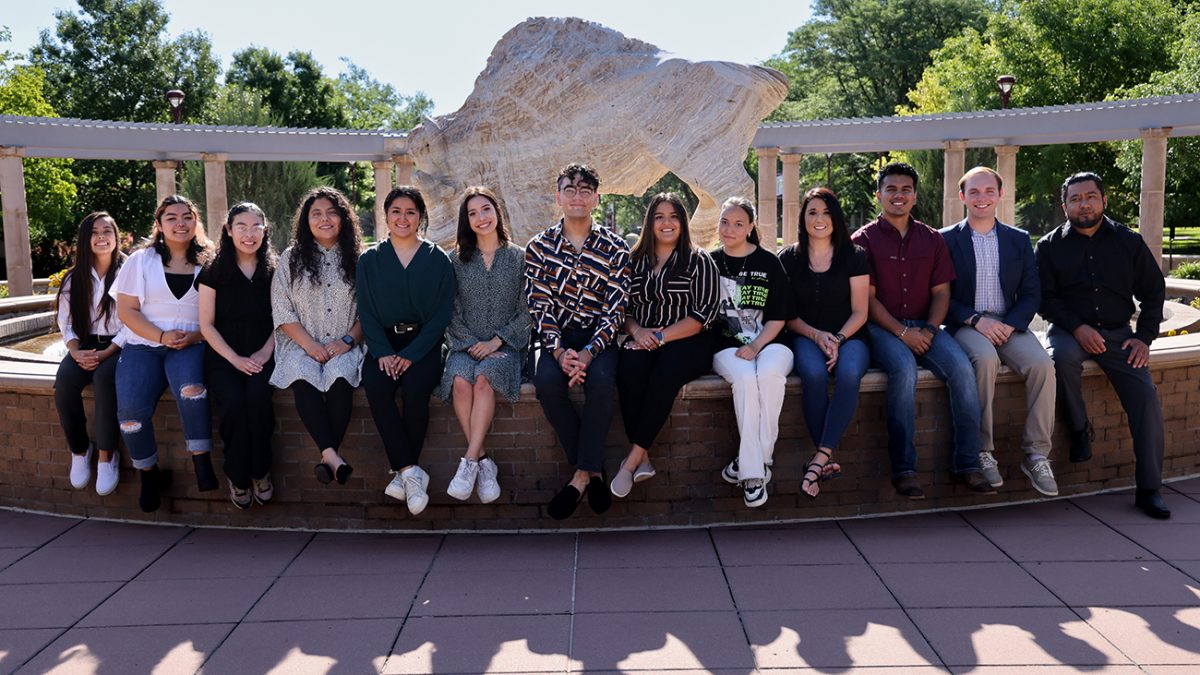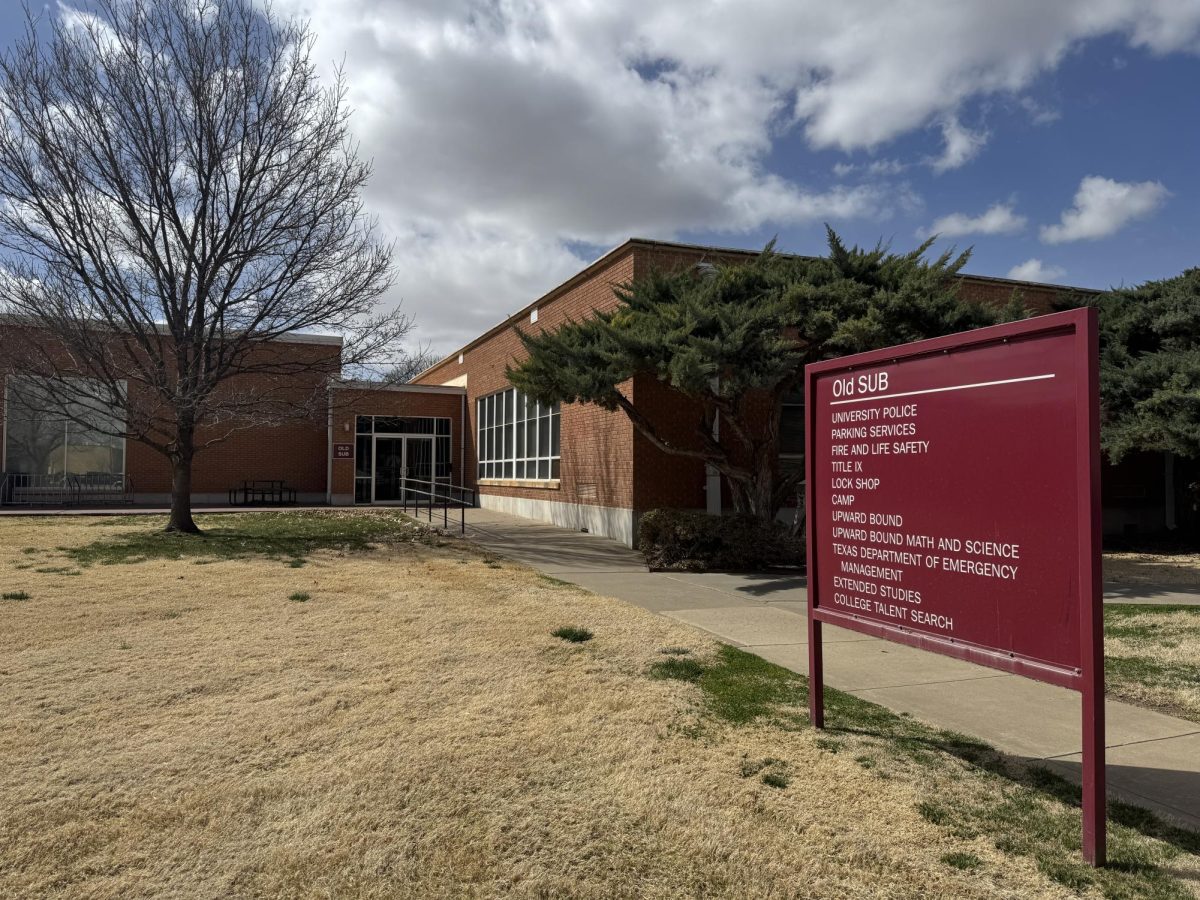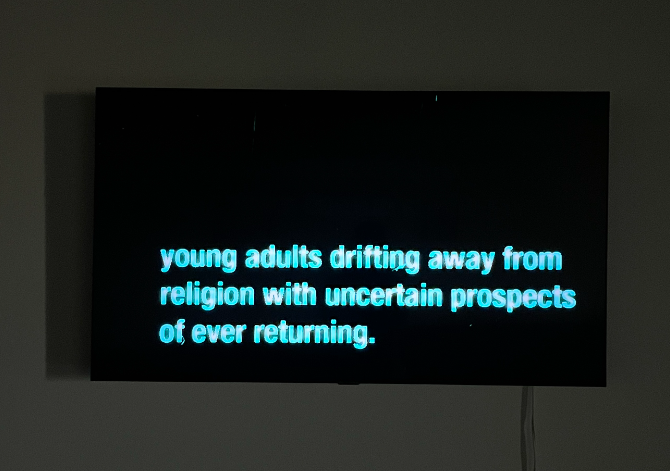A unique program that West Texas A&M University has adopted since 1999 is the Ronald E. McNair Postbaccalaureate Achievement Program, more commonly associated with the McNair Scholars Program.
The McNair Scholars Program is named after Dr. Ronald E. McNair, the second African American to fly in space. Although Dr. McNair tragically lost his life in the Challenger Space Shuttle Mission explosion, his death encouraged members of Congress and the U.S. Department of Education to provide funding so that the McNair Scholars Program could continue.
The program is designed to prepare qualified undergraduate students for graduate and doctoral studies by dedicating a substantial amount of time toward researching an area of interest and participating in other scholarly activities such as presenting their research discoveries, learning about graduate and doctoral programs and opportunities to network.
To understand more about the McNair Scholars Program, here are three current scholars and information about their research.

Michelle Truong is a senior psychology major on a pre-medical track from Houston, and became a McNair to research the ways that childhood development affects the developing human brain.
“I have a deep interest in psychology, psychiatry and medicine,” Truong said. “So I decided to combine all three by researching how the brain is affected cognitively as well as biologically by childhood trauma.”
Considering Truong is interested in psychology, psychiatry and medicine, their dream career is to be a psychiatrist specializing in LGBTQ+ and minority students of color. They were led to McNair through researching the programs WT offers to help students get into graduate school. During this, Truong met a previous scholar who talked highly about the program, leading them to speak with Victoria Salas, the McNair Scholars Program director.
“I’ve discovered that cognitively the brain is affected through its attention span, memory, emotional regulation, inhibitory behaviors and learning processes so once these are affected, the cognitive effects are impacted,” Truong said. “The following brain structures that are affected are the amygdala, the cerebellum, the corpus callosum, the prefrontal cortex and hippocampus. I learned that the individual’s cognition can also be impacted once a brain structure is affected.”
Since an individual’s brain is not entirely developed until age 25 to 30, enduring trauma during specific stages of development can negatively impact the nervous system. For instance, Truong mentioned that children lack the hypothalamic-pituitary-adrenal (HPA) axis, the area of the brain that manages stress and external stressors. If the child experiences traumatic events, their HPA axis will not develop; therefore, the child will grow up unable to successfully handle stress and external stressors.
“At a younger age, children have not had much exposure to the world,” Truong said. “So, depending on their primary caregiver as well as their educational role models and the people around them, their self-esteem, their image of themselves and image of the world can be warped and it can increase the risk for developing a psychiatric disorder.”
Since becoming a McNair Scholar, Truong has been engulfed in a supportive community among their program directors and cohorts who continue to push Truong to their full potential. Truong has also been given many opportunities and knowledge regarding educational opportunities beyond being an undergraduate. McNair has shown Truong that they’re capable of accomplishing big projects and able to achieve their goals.
“Besides being a McNair Scholar, I’m the founder and president of the Asian and Pacific Islander Association that I created in August 2022,” Truong said. “I’m also involved in the pre-healthcare club, Spectrum and the psychology club.”
Aside from academics, Truong enjoys crocheting, playing Pokemon, listening to music, reading and spending time with their dog Yo-Yo. Truong’s currently crocheting matching sweaters for them and Yo-Yo.
“For anyone considering joining the McNair Scholars Program, I would highly recommend you do so if you meet the requirements,” Truong said. “They have provided me many opportunities and opened my eyes to new possibilities. I highly recommend this program to anyone who qualifies.”

Raquel Chavez is a senior sports and exercise science major with an emphasis in physical therapy from New Mexico and became a McNair to research a comparison analysis of the muscle characteristics of 100-meter sprinters, 1500-meter long-distance runners and long jumpers.
“Well, actually, I didn’t even know it [the McNair program] was a thing,” Chavez said. “So my mentor came up to me and asked if I wanted to do McNair, and then they sent me constant emails. I just kind of brushed it off because, like, I didn’t know how I felt about it. And so it was actually my mentor that said, ‘yes,’ for me.”
Chavez would like to pursue a career as a physical therapist and found interest in researching a comparison analysis of muscle characteristics, considering that understanding its influence on the body can help an athlete’s performance, especially regarding injuries.
“So far, we knew that there would be a distinct difference among the muscle groups, but I think what shocked us the most is that the hamstrings came out to have more muscle fibers and the quads,” Chavez said. “This is really fascinating, and we knew that the sprinters should overpower all of the other groups, which they did. So we found that sprinters had a faster contraction time, and they have a big muscle fiber difference.”
Discovering the difference in contraction time and muscle fibers depending on the track event is significant when using a Tensiomyography machine. The machine is a “non-invasive, evidence-based measurement method that precisely measures the speed of muscle contraction under isometric conditions.” Essentially, utilizing the machine and understanding the difference in contraction time and muscle fibers is vital in physical therapy, rehabilitation and training regimens. It can improve an athlete’s performance, reduce injury risk, optimize specific muscle characteristics, understand muscle activation, patterns and synchronization and recognize a muscle’s strengths, weaknesses and deficiencies.
“My favorite thing about being a McNair is networking with other McNair students,” Chavez said. “I learn new ideas, make new friends and learn about physical therapy opportunities. Being a McNair has humbled me a lot because I didn’t realize how much it takes to do research. I have to juggle my personal life, classes, being a student-athlete and how to get participants for my research.”
Outside of academics, Chavez loves to bake and sleep. Aside from being a McNair, she is on the cross country and track team, where she dabbles in short and long-distance running. Chavez is also part of a student-athlete community service organization and works as a physical therapist technician.
“I think it has been such a fun and amazing experience being a McNair because I got to learn so much within a short amount of time,” Chavez said. “It’s a really great opportunity for anyone who is eligible.”

Nadia Reyna is a junior health science major on a pre-medical track from San Antonio and became a McNair to research patterns of surgical care and treatments for non-small cell lung cancer.
“I joined McNair to help me get a focus on graduate school,” Reyna said. “I was really debating with, like, being a PA or getting an M.D., and so the program has really helped with understanding the process of graduate school, especially financial aid scholarships, along with what areas in Texas have my area of career interest and gave me the chance to do research.”
Reyna is interested in pursuing a career as an orthopedic surgeon from growing up in sports and was led to the medical field since her mother is battling thyroid cancer. Her mother’s cancer led her to research lung cancer as it’s underrepresented despite being the number one highest mortality rate.
“So far, I’ve discovered that there are two different types of lung cancer, non-small and small,” Reyna said. “Small doesn’t have different stages while non-small does. Stage one is when you can do all different types of medications because it was caught early. I’ve also learned that the death rates are very high; it’s a five-year overall survival rate which has actually improved since the past few decades, but it’s still not good.”
Reyna was not only drawn to focusing on lung cancer since it’s the cancer with the highest death rate but also due to its underrepresentation. Although any type of cancer is awful, some cancers receive more from donations and non-profit work, while lung cancer is overlooked. Since COVID-19, Reyna has recognized the virus’s critical impact on individuals battling lung cancer, as their immune system is already compromised.
“Being a McNair has definitely changed my graduate school,” Reyna said. “I really was considering PA school but it changed me to pre-medical and so with that, it brings challenges and new goals such as going abroad and doing more clinical hours. I’m also doing an internship next summer, so that’s interesting. McNair definitely gave me a new lifestyle.”
Outside of academics, Reyna is on the women’s soccer team, is in the honors program, Rogers Lead, is a huddle leader, balances a job and shadows in a hospital. She also enjoys working out, traveling and anything to stay busy.
Truong, Chavez and Reyna will all be presenting their research on Oct. 17 at the research fair in the Cornette Library from 11:30 a.m. to 1 p.m.
Every spring semester, the McNair Scholars Program fulfills 15 positions so that the research period can begin in May and conclude in August. The program’s requirements include a WT student with at least 60 hours of academic credit, a GPA of 3.0 or higher, a U.S. citizen or permanent resident, continued enrollment at least one full semester after completing summer research and students either must be a first-generation college student who meets income eligibility that is determined by the U.S. Department of Education or a member of a group that is commonly underrepresented in graduate education as defined by the U.S. Department of Education.
To anyone eligible and interested in becoming a McNair Scholar, applications open Oct. 17 and are accepted through Feb. 1.





















